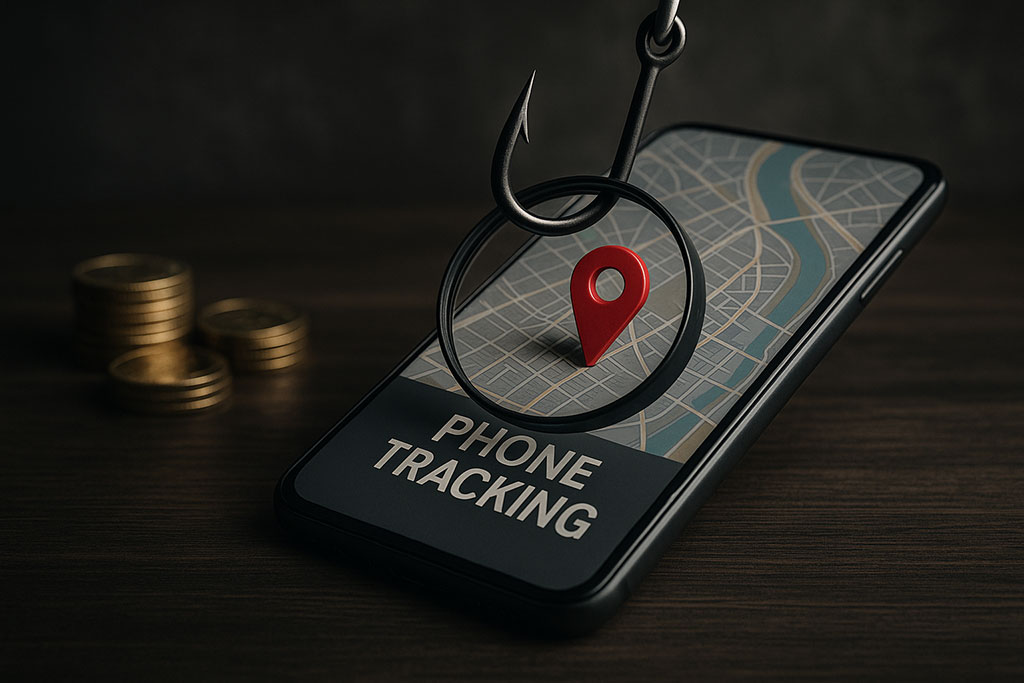
Most Salt Lake City engineering firm leaders use their phones like a mobile command center. Project dashboards, client emails, shared CAD files, budget approvals—all of it lives on that little device in your pocket.
But here’s what most don’t realize: phone tracking isn’t some fringe risk. It’s alarmingly easy, surprisingly common, and increasingly dangerous for engineering operations.
Whether it’s a disgruntled subcontractor, a foreign entity targeting infrastructure data, or a cybercriminal sniffing for credentials, one compromised phone can become the weak point in your entire operation.
How Phone Tracking Happens
Engineering firms deal with complex networks, but phone tracking often bypasses those defenses entirely. Here’s how it happens:
- Spyware Apps: Installed silently, often via fake project tools or PDFs. These can record calls, capture screenshots, and read text messages.
- Phishing Links: A "change order" or "vendor invoice" email can contain hidden tracking payloads.
- Over-Permissive Apps: Even legitimate tools like field apps or document viewers can leak location and access data.
- Stalkerware: Disguised as utilities, these tools blend in—but monitor everything.
Most of these don’t require technical skill. Some are sold online as "monitoring solutions" for less than lunch in downtown SLC.
Why Engineering Firms In Salt Lake City Should Be Concerned
It’s not just privacy at risk. It’s intellectual property.
Your phone likely contains access to:
- Design plans and project files
- Credentials to Deltek, Bluebeam, AutoCAD cloud libraries
- Communications about infrastructure bids or municipal contracts
- Financial approvals and banking credentials
One breach can jeopardize client trust, breach NDAs, or even violate CMMC/NIST guidelines.
Think this is rare? According to the Verizon Data Breach Investigations Report, small businesses average $120,000 in breach costs. And the most common entry point? Mobile devices.
Signs Your Phone Might Be Compromised
Spyware is designed to be quiet. But you can watch for:
- Sudden battery drain (even when idle)
- Increased mobile data usage
- Strange background noise on calls
- Phone feels warm even when unused
- Crashes or lag during basic use
- Unfamiliar icons or background apps
Individually, these signs might seem harmless. But together, they’re worth investigating—especially if you manage sensitive project data.
How To Secure Your Engineering Team’s Phones
- Run Security Scans: Use mobile-specific tools to detect spyware and track suspicious behavior.
- Review App Permissions: Disable location/microphone access for apps that don’t need it.
- Update Firmware Promptly: OS patches often block known tracking exploits.
- Reset If Needed: If your phone is infected, a factory reset—followed by reconfiguring MFA and credentials—may be the safest route.
- Use Biometric Locks + MFA: Face ID, fingerprint, and app-level two-factor authentication are essential.
Don’t Let A Compromised Phone Derail A $10M Project
If you’re managing site logistics, stakeholder communication, and project data from your phone, security has to be part of your daily habits.
Engineering firms in Salt Lake City operate under high expectations, tight deadlines, and strict compliance. A single compromised phone could mean more than embarrassment—it could mean project loss or even legal fallout.
At Qual IT, we help engineering leaders secure their mobile environments as part of comprehensive managed IT services. We specialize in workflows like yours. And we offer peace of mind with every screen tap.
Start with our FREE Network Risk Assessment. We’ll help identify vulnerabilities across your mobile and office systems—before someone else finds them first.



